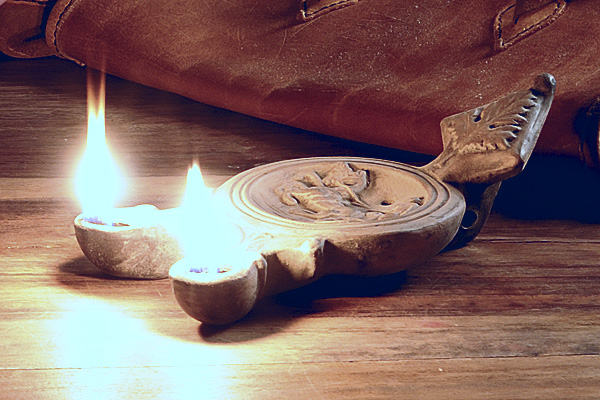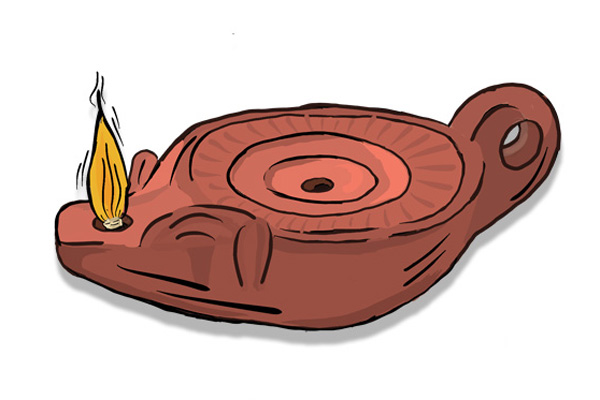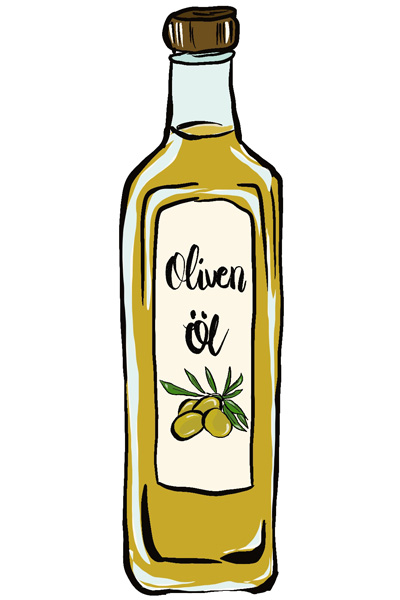Oil Lamps
Roman oil lamp antique and unique
The magic of ancient light: Experience the magic of Roman oil lamps.
For centuries, these small but delicate antique lamps have enchanted people with their warm, soothing light and were an important part of Roman everyday life.
From simple clay lamps to intricately decorated bronze work on metal, Roman oil lamps are not only aesthetically pleasing, but also an important historical witness to ancient times.
Discover the fascinating history and function of Roman oil lamps.
The authentic oil lamps are fully usable
Fair trade papyrus
The direct purchase of papyrus from farmers in Egypt supports their families. Fair prices and regular purchase of papyrus products enable families to plan and invest for the long term. The fair trade is more than import and distribution of papyrus. The personal relationship with the papyrus producers and the family members is important to us and guarantees that no middlemen in Egypt and Europe drive the prices up. This is important to us !
"We have understood that behind every sheet of papyrus there is a human being with basic needs."
So all family members as well as our team work together to keep the economic operation and production of Papyrus up and running and help with fair prices so that the families can live from it.
Papyrus from Egypt: Egyptian ancestor of paper
In Roman antiquity, a papyrus roll was the most important material for writing on and was produced purely by hand then, as it still is today. Papyrus bushes grew along the Nile. Greeks and Romans were convinced by the advantages of the papyrus of antiquity. Even today, important documents are recorded on a papyrus scroll because of the longevity of the material.
Papyrus Plants - Papyri Shop History
In small towns in Egypt, in the Nile Delta, papyrus leaves are still traditionally made from plants. Many rural families live among the papyrus fields. They harvest papyrus at almost any time of the year, the long perennial plants of the Cyprus grass, and process the raw material into papyrus leaves with great skill. Each leaf is carefully produced in more than ten individual steps, giving it its individual, handcrafted character. The papyrus roll is produced using the same technique as thousands of years ago.
Brennmittel für Öllampen
Die verwendeten Brennstoffe (Fett, Talg, Öl) sind dickflüssig, so dass sie nur einige Millimeter bis wenige Zentimeter im Docht nach oben steigen können.
Geht der Brennstoff zu Neige, verglüht ein Teil des Dochts. Als Brennstoff diente den Römern Olivenöl, selbstverständlich können Sie aber auch normales Lampen oder Speiselöle benutzen (bitte lesen Sie die der Lampe beigelegten Informationen sorgfältig).
Was macht römische Öllampen so faszinierend?
Vielleicht liegt es an ihrer simplen Herstellungsweise, ihrer einfachen Bedienung oder der reichhaltigen Dekoration mit Ornamenten und Szenen der Mythologie.
Der moderne Mensch ist von Licht umgeben, es gibt sogar Worte wie "Lichtlärm", doch vor der Erfindung des Gaslichts oder der Elektrizität war dies anders.
Es gab noch Fackeln, Laternen, Kerzen, aber aus Ton gefertigte, römische Öllampen waren bald das beliebteste Leuchtmittel der Antike – sie waren einfach herzustellen, kostengünstig und leicht zu transportieren. Grundsätzlich lässt sich jedes Objekt, das gefüllt und mit einem Docht ausgestattet werden kann, als Lampe benutzen.
Schon in der frühen Steinzeit wurden Muscheln und Steinschalen mit Fett genutzt, in der Antike erlebten Öllampen dann ihren Durchbruch: Sie wurden in Massen hergestellt, aus einer Vielzahl von Materialien, wie Ton, Glas, Metall oder Stein.
Ordering & shipping
How fast is the shiping ?
Can I also order on account?
Returns
Do we supply to traders and museums?
Schools and authorities in DE can conveniently order on account. Private customers are welcome to use Ratepay purchase on account (Paypal service)
Safe and easy ordering within Germany from 75 €
Always new ideas and optimised products through our years of experience and intensive cooperation with schools and museums.



